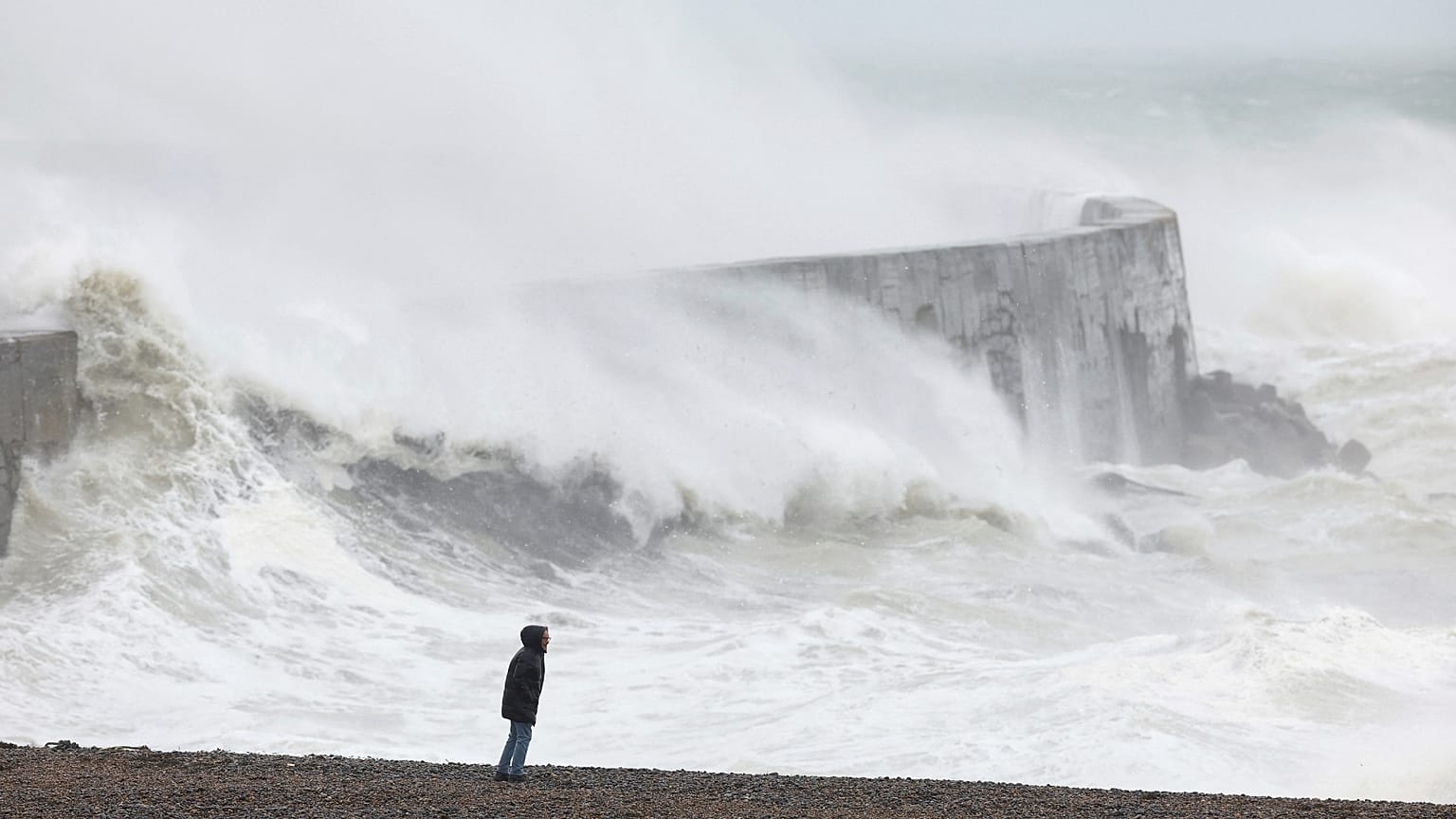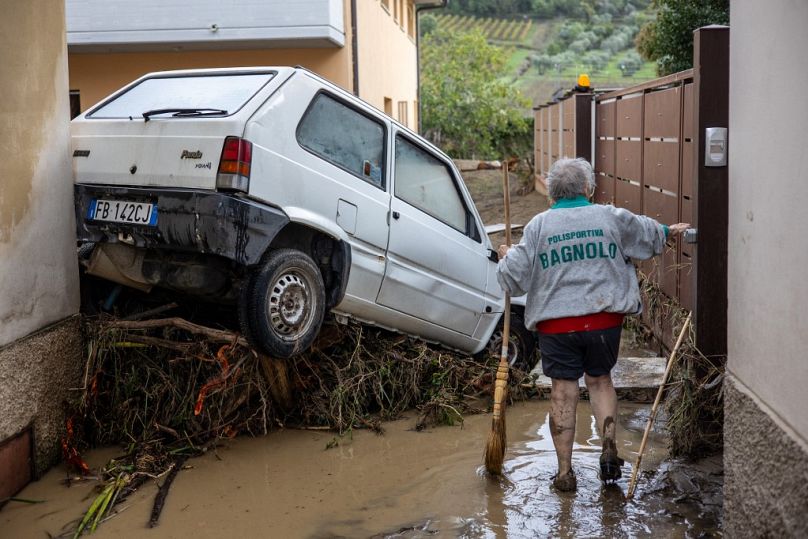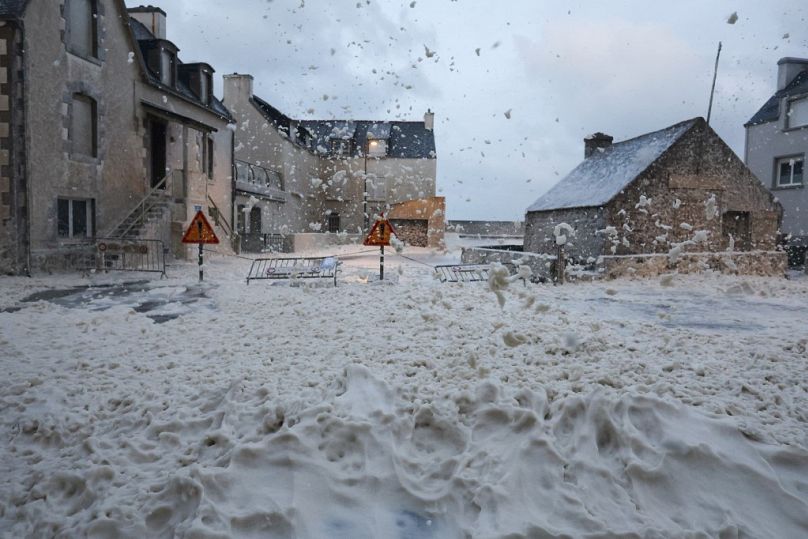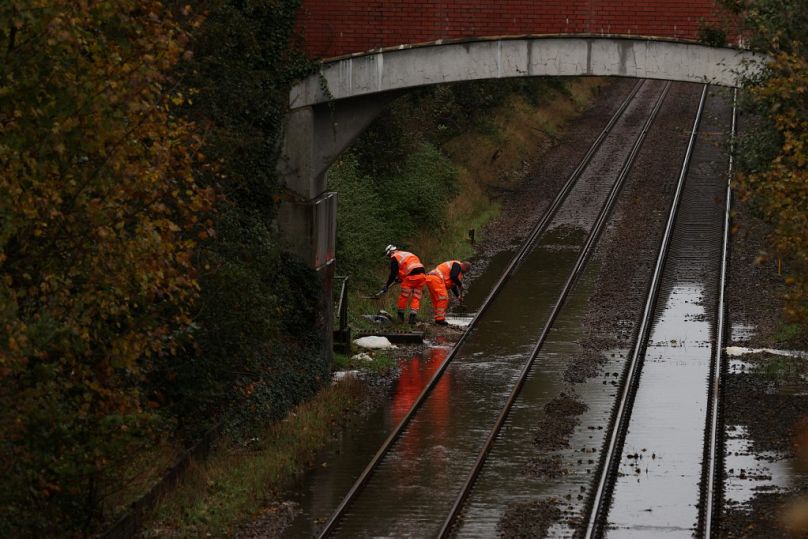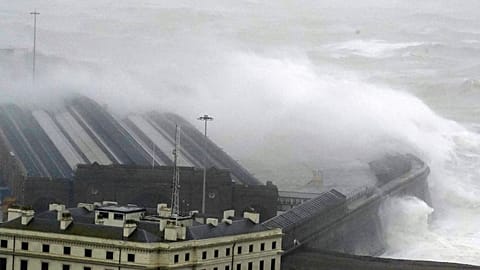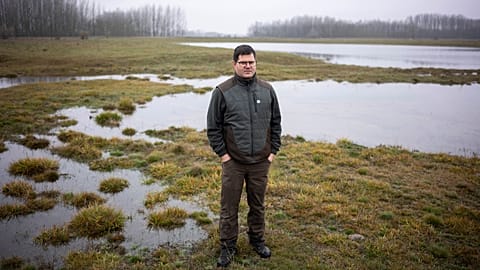We asked climate experts what impact climate change is having on European storms like Ciarán.
Tuscany has declared a state of emergency after at least five people were killed by flooding on Thursday (3 November) as Storm Ciarán hit Italy.
"What happened tonight in Tuscany has a clear name: climate change," Tuscany's regional president Eugenio Giana wrote on X, formerly known as Twitter.
"We must all work to counter it, without giving up in the face of other people's disinterest."
Storm Ciarán has wreaked havoc across Europe in the last few days. At least seven people were killed as it swept across Spain, France, Belgium, the Netherlands, the UK and Germany, knocking out electricity in millions of homes.
The storm has also broken weather records with wind speeds of more than 120kph and gusts of over 200kph seen in the northwestern French department of Finistère, according to Meteo France.
The meteorological agency said, "Storm Ciaran should rank among the forty major storms since 1980".
Italy's deadly flooding came after almost 200 millimetres of rain fell in three hours from the coastal city of Livorno to the inland valley of Mugello, causing riverbanks to overflow.
On Friday, officials including Giana linked the record rainfall to climate change.
"If the conditions are different than 20 years ago, it is obvious to everyone,’' the government's minister for civil protection Nello Musumeci, told Italian news channel Sky TG24. He added that weather systems in Italy have become more tropical in nature.
Is climate change making weather events like Storm Ciarán worse?
Scientists still have to properly study Storm Ciarán and the exact influence of climate change on these weather events isn’t known.
“An attribution study will need to be conducted after the event to determine how likely this storm's intensity was due to anthropogenic climate change,” says Dr Melissa Lazenby, a lecturer in climate change at the University of Sussex.
The factors that cause storms to form and be maintained are complex. But some, like the extent of sea ice in regions close to the poles, the strength and position of jet streams, sea surface temperatures and climate patterns such as El Nino, are likely to be affected by climate change.
“Climate change will affect these four factors differently and some will cause more intense storms and others will weaken them, hence there being no consensus about how much influence climate change is having on these storms,” Dr Lazenby adds.
Wind strength and the frequency of storms vary from year to year and significant trends haven’t been seen in recent climate observations.
Is climate change bringing more rain?
What we do know, however, is that climate change is likely influencing the increased rainfall seen in extreme storms like Ciarán.
“The reason being is due to every 1 degree of warming we experience, the atmosphere is able to hold 7 per cent more water vapour and therefore we see an increased chance of heavy rainfall associated with rainfall events,” Dr Lazenby explains.
There is also some evidence in climate projections to suggest that the frequency and intensity of storms could slightly increase.
“Climate change is warming both our oceans and our atmosphere, providing more fuel for storms to form and intensify, resulting in heavier downpours,” says Ben Clarke, a researcher for World Weather Attribution at Imperial College London.
“If we continue to use fossil fuels at the same rate, we will pay ever growing costs as more frequent and intense storms impact the UK and Europe, and as dangerous weather becomes more common across the world.”
Though some measures are in place to deal with these types of storms, more needs to be done on the local and national scale.
“Early warning systems need to be in place for such events and measures such as flood defences and improved drainage need to be implemented where required,” says Dr Lazenby.
“We are expecting more intense rainfall due to climate change on the whole and therefore measures need to be developed and implemented to build resilience against heavy rainfall.”















